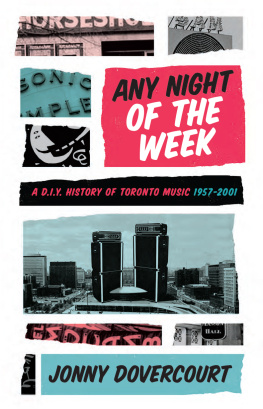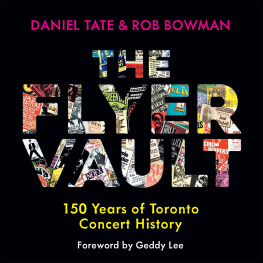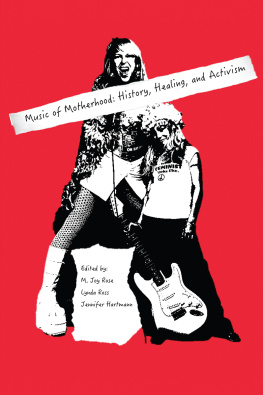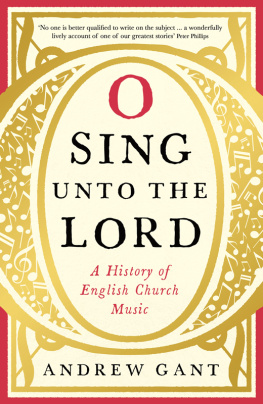Table of Contents
Guide

Praise for ANY NIGHT OF THE WEEK
Toronto was always weirder than anyone thought. Its a major-label town where the thriving underground has been routinely written out of official histories until now. Jonny Dovercourt is in a unique position to connect the T-dots through decades of freak-flag-fliers. This long-overdue document, rich with personal stories, is also just a great read. Every Canadian music fan should read it.
Michael Barclay, author, The Never-Ending Present; co-author, Have Not Been the Same
Toronto has long been one of North Americas great music cities, but hasnt got the same credit as L.A., Memphis, Nashville, and others. This book will go a long way towards proving Torontos place in the music universe.
Alan Cross, host, the Ongoing History of New Music
The sweaty, thunderous exhilaration of being in a packed club, in collective thrall to a killer band, extends across generations, platforms, and genre preferences. With this essential book, Jonny has created something that's not just a time capsule, but a time machine as you take in his keen insights into the (r)evolution of the citys independent music scene, youre there, on the floor, pogoing or pumping your fist or just imperceptibly swaying with folded arms, in a sea of other fans taking in the best fucking band youve ever seen on a stage. Sarah Liss, author of Army of Lovers
A dizzyingly thorough map of scenes and spaces that collectively assembled the fabric of Torontos musical identity. Since no one else was paying attention, we often only had our own comrades to witness our creative impulses, creating a parochial fishbowl that only recently is open to the rest of the world. This book is a mad web of cross-references, baby steps, and a real love story to a place that was forced to DIY, but chose to DIT Do It Together creating a community model that is still part of the local psyche.
Don Pyle, musician, Shadowy Men on a Shadowy Planet, and author, Trouble in the Camera Club
Jonny Dovercourt, a tireless force in Torontos music scene, offers the widestranging view out there on how an Anglo-Saxon backwater terrified of people going to bars on Sundays transforms itself into a multicultural metropolis that raises up more than its share of beloved artists, from indie to hip-hop to the unclassifiable. His unique approach is to zoom in on the rooms where its happened the live venues that come and too frequently go as well as on the people whove devoted their lives and labours to collective creativity in a city that sometimes seems like itd rather stick to banking. For locals, fans, and urban arts denizens anywhere, the essential Any Night of the Week is full of inspiration, discoveries, and cautionary tales.
Carl Wilson, Slate music critic and author of Lets Talk About Love: A Journey to the End of Taste, one of Billboards 100 Greatest Music Books of All Time
Copyright Jonny Dovercourt, 2020
first edition

Published with the generous assistance of the Canada Council for the Arts and the Ontario Arts Council. Coach House Books also acknowledges the support of the Government of Canada through the Canada Book Fund and the Government of Ontario through the Ontario Book Publishing Tax Credit.
LIBRARY AND ARCHIVES CANADA CATALOGUING IN PUBLICATION
Title: Any night of the week : a DIY history of Toronto music / Jonny Dovercourt
Names: Dovercourt, Jonny.
Identifiers: Canadiana (print) 20190146907 | Canadiana (ebook) 20190141492 | ISBN 9781552453964 (softcover) | ISBN 9781770566095 (PDF) | ISBN 9781770566088 (EPUB)
Subjects: LCSH: Popular musicOntarioTorontoHistory and criticism.
Classification: LCC ML3484 .8 T686 D74 2019 | DDC 781.640971354dc23
Any Night of the Week: A DIY History of Toronto Music, 19572001 is available as an ebook: ISBN 978 1 77056 608 8 (EPUB); ISBN 978 1 77056 609 5 (PDF)
Purchase of the print version of this book entitles you to a free digital copy. To claim your ebook of this title, please email with proof of purchase. (Coach House Books reserves the right to terminate the free digital download offer at any time.)
TABLE OF CONTENTS
INTRODUCTION
A t the start of 2017, Toronto lost seven of its dedicated music venues. In the space of three months, the Silver Dollar room, the Central, Holy Oak, Hughs room, the Hideout, the Hoxton, and Soybomb all closed their doors most of them forever. The alarm bell was sounded in Torontos local music community: panel discussions were convened, council meetings were flashmobbed. The vanishing venues crisis was a teeth-grinding irony in a town trying to brand itself a Music City and the home of the worlds most popular musical artist.
In the twenty-first century, new original music is Torontos largest and most successful cultural export. The 2010s were the decade of Drake and the Weeknd, when hazy, melodic hip-hop and R&B became along with Raptors basketball proud ambassadors for Canadas largest city, the sprawling, misunderstood metropolis on the north shore of Lake Ontario. A decade earlier, in the 2000s, Toronto became a global hotspot for indie music, with tuneful, communitarian collectives like Broken Social Scene and the Hidden Cameras busting beyond the citys borders, followed by a breathtaking diversity of visionary artists from Fucked up to Tanya Tagaq.
Considering this bounty, its hard to believe that pre-2000 Toronto was a tough place to be if you wanted to make music. For local bands in the twentieth century, hailing from here was a handicap, if not an outright curse.
This book is about how Toronto transformed itself from an uptight provincial backwater to one of the worlds musical meccas. Its the story of how Toronto found its voice in original, homegrown music, and how our current wealth was built upon the hard work of countless community architects and the geography of supportive architecture.
But creative cities like Toronto which have identified music and the arts as key economic drivers still lack the means to sufficiently protect these supportive spaces. And just as these bricks-and-mortar sanctuaries need preservation, so too does our history. Torontos musical history is in danger of being forgotten and this especially holds true for the analog, pre-Internet twentieth century.
Todays endangered music venues are at risk of joining a long list of extinct species. And todays hometown heroes, who deserve every shred of success that has come their way, could not have gotten there without the trails blazed by the likes of Kensington Market, Martha and the Muffins, Michie Mee, and Do Make Say Think. Every band and venue has a lifespan, and some rest in peace for good reason. But other promising groups and spaces died tragically young. Their memory must be kept alive in order to safeguard the future.
In 2001, I found myself at ground zero of the Toronto indie-music explosion. There was a palpable sense of excitement; the old apathy was dying away, and it felt like a new day was rising. Barely a year or two earlier, such optimism would have seemed far-fetched.
I was a key instigator of a new artist-run collective called Wavelength. Everyone in attendance at our first meeting, in 1999, was a member of an active band on the local independent scene. Our various groups had been exploring the more accessible fringes of underground music shoegaze, post-punk, art-pop, lo-fi electronica. We were mostly Toronto natives who came of age in the far-flung suburbs; as a geeky, overweight kid playing in a basement band, I had found self-confidence and belonging in the downtown indie music community, as so many of us had. We also shared a sense of frustration. There were plenty of places to play, but breaking out of the city seemed impossible. Toronto was the capital of the Canadian music industry, but there was hardly any record-label interest directed toward our corner of the music scene, despite critical acclaim and campus radio support.







